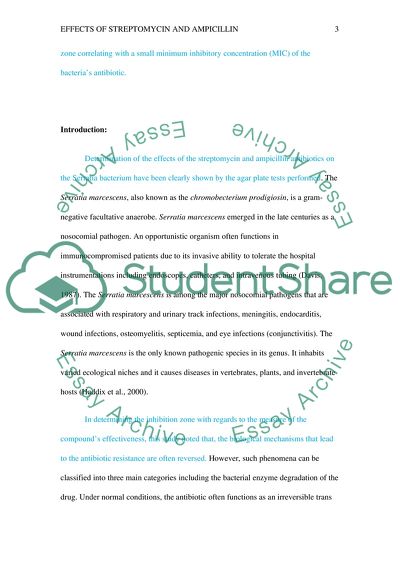Cite this document
(The Effects of Streptomycin and Ampicillin on Serratia Marcescens Report Example | Topics and Well Written Essays - 1750 words, n.d.)
The Effects of Streptomycin and Ampicillin on Serratia Marcescens Report Example | Topics and Well Written Essays - 1750 words. https://studentshare.org/medical-science/1801046-the-effects-of-streptomycin-and-ampicillin-on-serratia-marcescens
The Effects of Streptomycin and Ampicillin on Serratia Marcescens Report Example | Topics and Well Written Essays - 1750 words. https://studentshare.org/medical-science/1801046-the-effects-of-streptomycin-and-ampicillin-on-serratia-marcescens
(The Effects of Streptomycin and Ampicillin on Serratia Marcescens Report Example | Topics and Well Written Essays - 1750 Words)
The Effects of Streptomycin and Ampicillin on Serratia Marcescens Report Example | Topics and Well Written Essays - 1750 Words. https://studentshare.org/medical-science/1801046-the-effects-of-streptomycin-and-ampicillin-on-serratia-marcescens.
The Effects of Streptomycin and Ampicillin on Serratia Marcescens Report Example | Topics and Well Written Essays - 1750 Words. https://studentshare.org/medical-science/1801046-the-effects-of-streptomycin-and-ampicillin-on-serratia-marcescens.
“The Effects of Streptomycin and Ampicillin on Serratia Marcescens Report Example | Topics and Well Written Essays - 1750 Words”. https://studentshare.org/medical-science/1801046-the-effects-of-streptomycin-and-ampicillin-on-serratia-marcescens.


